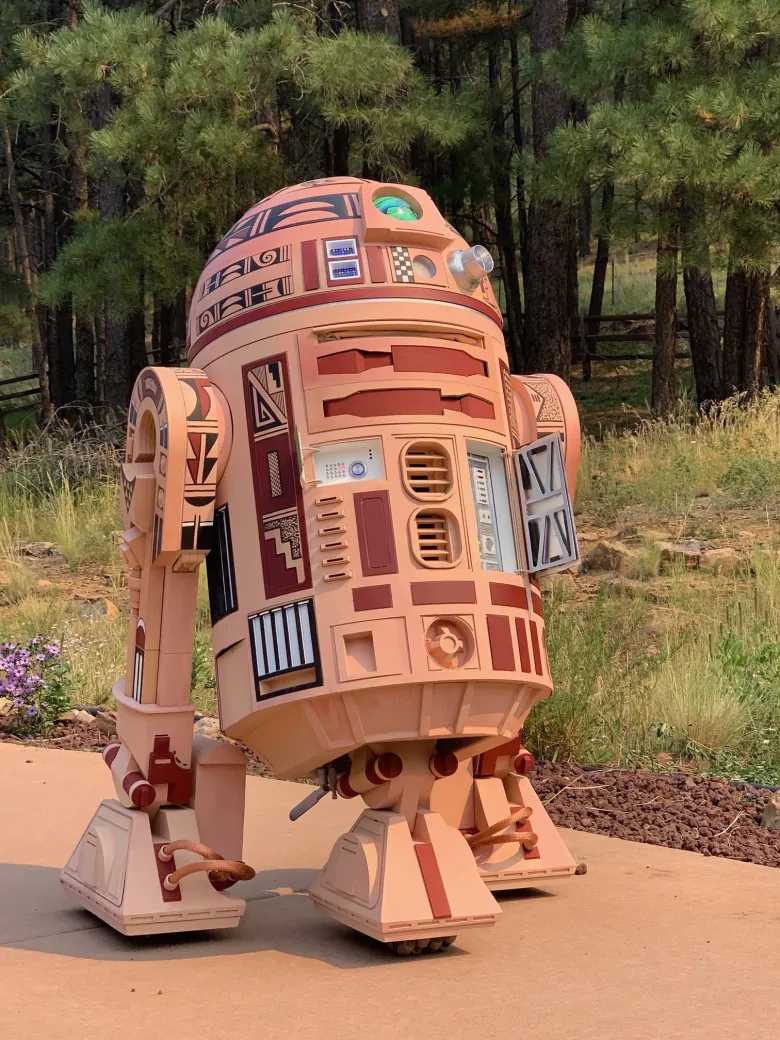Star Wars inspires Indigenous art in exhibit of cosplay, droids and paintings

Tony Thibodeau was roaming around Indigenous Comic Con when he noticed a bit of a trend: Indigenous people love and relate to the Star Wars story.
He launched “The Force is With Our People,” an exhibit that features artwork from more than 20 different contemporary Native American artists at the Museum of Northern Arizona.
The exhibit includes paintings, jewelry, pottery, and even cosplay costumes.
Thibodeau, the curator of the exhibit, told Unreserved host Rosanna Deerchild that he couldn’t choose a favourite piece from the exhibit.
“That’s almost like choosing your favourite child,” he laughed. But, he loves a piece called Hopi R2, a fully functioning R2-D2 droid unit.
“It moves, and it talks, and it makes noises,” said Thibodeau. “I love watching kids interacting with it.”
Hopi-Tewa artist Duane Koyawena painted the R2 unit that beeps and boops in the museum. The droid was built by Joe Mastroianni, and its colour scheme was inspired by Hopi pottery.
Koyawena grew up with Star Wars, and he’s always felt a special connection between the droids and Hopi culture.
“They’re always trying to assist and help you get through certain things,” Koyawena said. Hopi culture is all about people helping others navigate their lives — just like the droids help navigate ships or help open doors.
“That’s a big connection,” he said.
But the bigger, more general connection to Star Wars, Thibodeau said, is apparent — especially as the exhibit continues to grow.
Thibodeau said museums typically don’t add pieces to the exhibit once it opens, but he had to make an exception for one adorable character: Baby Yoda.
“Native artists and Native communities have really embraced this Baby Yoda character,” he said. The museum decided to reflect that by adding two Baby Yoda pieces to the exhibit.
He hopes the “incredible response” he’s seen to Baby Yoda continues to resonate with Indigenous Star Wars fans for generations to come.
The Force is With Our People is on exhibit at the Museum of Northern Arizona until May 2020.





